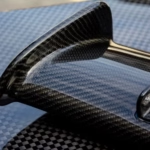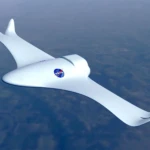Advantages of U diamond:
1. First of all, the difference between U-drills and ordinary drills is that U-drills use peripheral blades and center blades. From this point of view, the relationship between U-drills and ordinary hard drills is actually similar to that between collet turning tools and welding. Turning tools, the blade can be replaced directly without resharpening after the tool wears out. After all, using indexable inserts saves material compared to hard, solid drilling, and the consistency of the inserts makes it easier to control part size.
2. U drill bit has better rigidity and can use very high feed speed. In addition, the processing diameter of the U drill is much larger than that of ordinary drills, and the maximum can reach D50~60mm. The U drill cannot be used due to the blade characteristics being too small.
3. When U drills encounter various materials, it is enough to replace the blades of the same type, and the hard drills of different brands are not so convenient.
4. Compared with hard drilling, the precision of holes drilled by U-shaped drilling is even higher and the smoothness is better, especially when the cooling and lubrication is not smooth, it is more obvious and hard drilling U can correct the position accuracy. of the hole, which cannot be done by hard drilling. Okay, you can use the U drill as a serious router bit.
Advantages of U drill in CNC machining:
1. The U drill can drill holes on surfaces with a tilt angle less than 30~ without reducing the cutting parameters.
2. After the cutting parameters of the U drill are reduced by 30%, intermittent cutting can be achieved, such as processing intersecting holes, intersecting holes and intersecting holes.
3. The U drill can drill holes in multiple steps, and can also ream, chamfer and eccentrically drill.
4. When drilling U, most of the drilling chips are short chips, and its internal cooling system can be used for safe chip removal. There is no need to clean the chips on the tool, which promotes the continuity of tool processing. product, shortens processing time and improves efficiency.
5. Under standard aspect ratio conditions, there is no need to remove chips when using a U drill bit to drill holes.
6. The U drill is an indexable tool. There is no need to sharpen the blade once worn. It is easy to replace and its cost is low.
7. The surface roughness of the hole processed by the U drill is small and the tolerance range is small, so it can replace part of the work of boring tools.
8. There is no need to pre-drill a center hole when using a U-drill. The bottom surface of the blind hole produced is relatively straight, eliminating the need for a flat-bottomed drill bit.
9. Using U-Drill technology can not only reduce the number of drilling tools, but also because the U-Drill uses a carbide blade in the head, its service life is more than ten times longer to that of ordinary drills. time, the blade has four edges. The cutting blade can be replaced at any time when the blade is worn out. The new cut saves a lot of time in grinding and replacing tools and can improve work efficiency by 6-7 times on average. times.
Tips for using U drill bits on CNC machine tools
1. Using U-drills requires greater machine tool rigidity and alignment of tool and workpiece. Therefore, U drills are suitable for use on CNC machine tools with high power, high rigidity and high speed.
2. When using a U drill, the center blade should be strong and the peripheral blades should be sharper.
3. When processing different materials, blades with different groove shapes should be used. Generally speaking, when the feed is small, the tolerance is small and the aspect ratio of the U drill is large, the groove-shaped blade with smaller cutting force is. On the contrary, for rough machining, the tolerance is large and the U drill is large. If the length to diameter ratio of the drill bit is small, choose a grooved insert with higher cutting force.
4. When using a U drill, you should consider the power of the machine tool spindle, the clamping stability of the U drill, the pressure and flow rate of the cutting fluid, and control the effect chip removal of the U-drill. Otherwise, the surface roughness and hole size. will be greatly affected.
5. When tightening the U-drill, the center of the U-drill should coincide with the center of the workpiece and be perpendicular to the surface of the workpiece.
6. When using a U drill, appropriate cutting parameters should be selected according to different workpiece materials.
7. When testing a cut with a U-drill, be careful not to reduce the feed or speed for fear, which may damage the blade of the U-drill or damage the U-drill.
8. When using U-drill processing, when the blade is worn or damaged, the cause should be carefully analyzed and replaced with a blade with better toughness or greater wear resistance.
9. When using a U drill to process step holes, you should start with the large holes first, and then process the small holes.
10. When using the U-drill, pay attention to the cutting fluid to have enough pressure to remove the chips.
11. The blades used in the center and edge of the U-drill are different and should not be used incorrectly, otherwise the tool holder of the U-drill will be damaged.
12. When using a U drill to drill holes, workpiece rotation, tool rotation, and simultaneous rotation of tool and workpiece can be used. However, when the tool moves in linear feed mode, the most common method is to use workpiece rotation.
13. When machining on a CNC lathe, you must consider the performance of the lathe and make appropriate adjustments to the cutting parameters, usually reducing speed and feed.
Problems that often arise during U-drilling in CNC machining:
1. The blade is damaged too quickly and breaks easily, increasing the processing cost.
2. A violent whistling sound is made during processing, and the cutting state is abnormal.
3. Machine tool vibration affects the processing accuracy of the machine tool.
Key points to note when using U diamonds:
1. When installing the U drill, pay attention to the front and rear directions, which blade is up, which blade is down, which is facing inward and which is facing outward .
2. The center height of the U-drill needs to be corrected. The control range is required depending on its diameter. It is generally controlled within 0.1 mm. The smaller the diameter of the U-drill, the more center height is required. is not good on both sides of the U-drill. It will wear out, the hole diameter will be too large, the blade life will be shortened, and small U-drills will break easily.
3. U-drills have very high coolant requirements. It is necessary to ensure that the coolant is ejected from the center of the U-drill. The higher the pressure of the coolant, the better you can block the exit of excess water. the turret to ensure its pressure.
4. The cutting parameters of the U drill strictly follow the manufacturer’s instructions, but different brands of blades and power of the machine tool should also be considered. During processing, you can refer to the load value of the machine tool and make appropriate adjustments. . Generally, high speed and low feed are used.
5. U-drill blades should be checked frequently and replaced in time. The different blades must not be installed upside down.
6. Adjust the feed amount according to the hardness of the workpiece and the length of the tool overhang. The harder the workpiece, the greater the tool overhang and the smaller the amount of tool feed.
7. Do not use excessively worn blades. The relationship between blade wear and the number of workpieces that can be processed should be recorded during production, and new blades should be replaced in a timely manner.
8. Use sufficient internal coolant with the correct pressure. The main functions of coolant are chip removal and cooling.
9. U drill bits cannot be used to process softer materials, such as copper, soft aluminum, etc.
Daguang focuses on providing solutions such as precision CNC machining services (3-axis, 4-axis, 5-axis machining), CNC milling, 3D printing and rapid prototyping services.
















